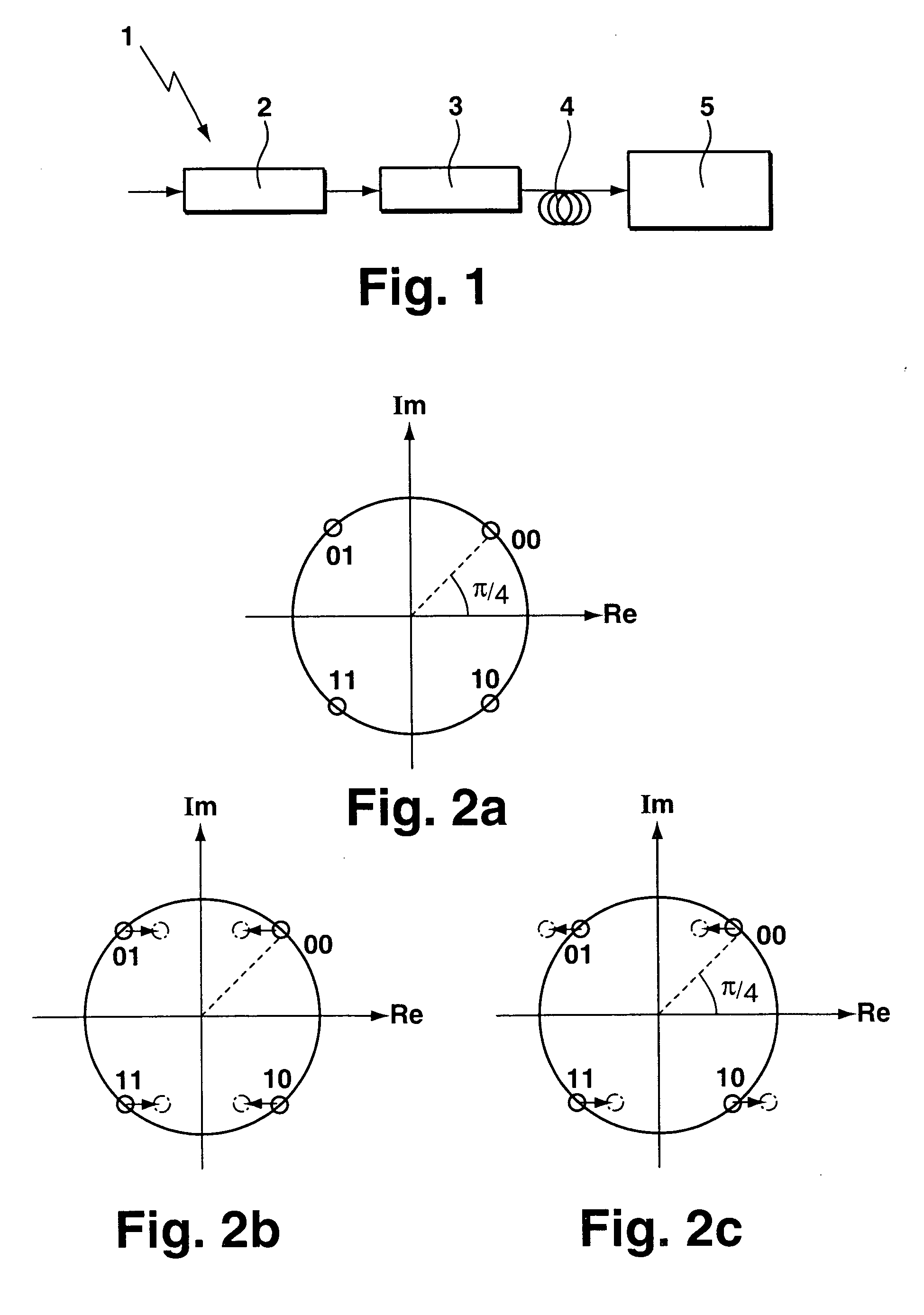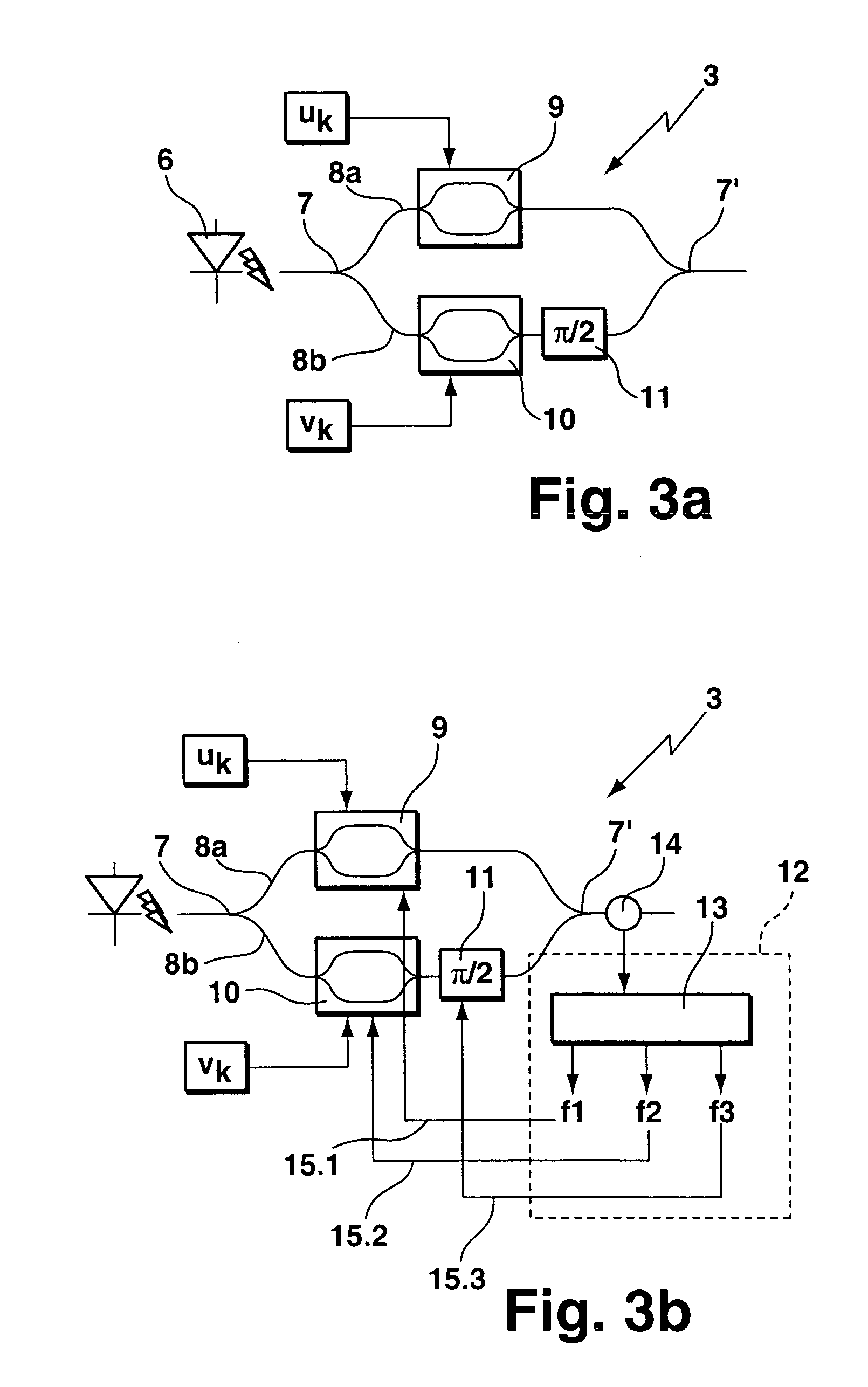Fiber optical transmission system, transmitter and receiver for DQPSK modulated signals and method for stabilizing the same
a fiber optic transmission system and optical signal technology, applied in the field of fiber optic transmission systems, can solve the problems of difficult generation of dqpsk modulated signals, complex generation and reception of dqpsk signals, and complex transmission curves, and achieve the effect of simple and cost-effectiv
- Summary
- Abstract
- Description
- Claims
- Application Information
AI Technical Summary
Benefits of technology
Problems solved by technology
Method used
Image
Examples
Embodiment Construction
[0056] The following detailed description of the invention refers to the accompanying drawing. The same reference numerals may be used in different figures of the drawing to identify the same or similar elements.
[0057] In the following, the stabilization of the DQPSK transmitter 3 represented in FIG. 3a will be explained. For the stabilization of the Mach-Zehnder modulators 9, 10 and the π / 2 phase shifter 11 of the transmitter 3, it comprises a feedback circuit 12 shown in FIG. 3b. A sample signal is extracted from the output of the transmitter 3 after the combiner 7′ by a tap coupler 14. The sample signal is fed to the feedback circuit 12 which comprises a photodiode 13 for o / e-conversion of the sample signal. The feedback circuit 12 uses the sample signal for generating three bias signals 15.1 to 15.3 each being modulated with a different pre-defined frequency f1 to f3, which are provided to the Mach-Zehnder modulators 9, 10 and the π / 2 phase shifter 11, respectively. The bias si...
PUM
 Login to View More
Login to View More Abstract
Description
Claims
Application Information
 Login to View More
Login to View More - R&D
- Intellectual Property
- Life Sciences
- Materials
- Tech Scout
- Unparalleled Data Quality
- Higher Quality Content
- 60% Fewer Hallucinations
Browse by: Latest US Patents, China's latest patents, Technical Efficacy Thesaurus, Application Domain, Technology Topic, Popular Technical Reports.
© 2025 PatSnap. All rights reserved.Legal|Privacy policy|Modern Slavery Act Transparency Statement|Sitemap|About US| Contact US: help@patsnap.com



